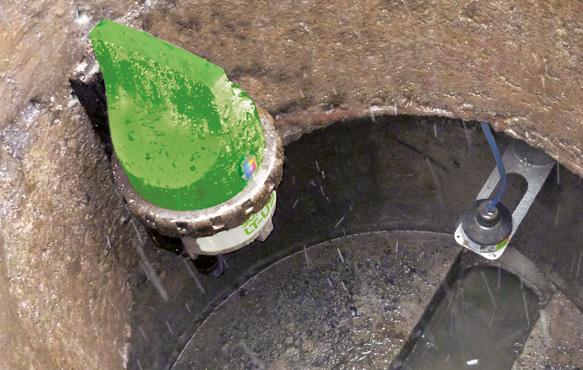Rainwater management, a major challenge for contract operators relative to flood prevention and environmental protection, requires constant monitoring of waste water collection networks. With soil artificialisation, natural rainwater infiltration is decreasing. In urban environments, run-off water volumes increase significantly during heavy rain. Waste water networks are not designed to accept such quantities of water. Though they are not required to collect and treat rainwater, contract operators are responsible for observing self-monitoring requirements and for conducting permanent waste water network diagnostics to monitor and control the volumes of water released into the natural environment.
Data Loggers compatible with all network instruments
 During rainy episodes, close attention is paid to combined sewer overflows. The LT devices monitor Combine Sewer Overflows (CSO) to determine numbers and durations of overflows (overrun of a height threshold, or moisture detection via an overflow sensor). As soon as an overflow is detected, a measurement acquisition acceleration process is automatically implemented. The Data Loggers perform flow rate calculations and generate daily reports of water volumes released into the natural environment. An alert in the event of threshold overrun can be sent to the agent on standby duty and to the control PC. All self-monitoring data are sent daily in order to populate the self-monitoring registers.
During rainy episodes, close attention is paid to combined sewer overflows. The LT devices monitor Combine Sewer Overflows (CSO) to determine numbers and durations of overflows (overrun of a height threshold, or moisture detection via an overflow sensor). As soon as an overflow is detected, a measurement acquisition acceleration process is automatically implemented. The Data Loggers perform flow rate calculations and generate daily reports of water volumes released into the natural environment. An alert in the event of threshold overrun can be sent to the agent on standby duty and to the control PC. All self-monitoring data are sent daily in order to populate the self-monitoring registers.
Meeting statutory self-monitoring requirements
During rainy episodes, close attention is paid to combined sewer overflows. The LT devices monitor Combine Sewer Overflows (CSO) to determine numbers and durations of overflows (overrun of a height threshold, or moisture detection via an overflow sensor). As soon as an overflow is detected, a measurement acquisition acceleration process is automatically implemented. The Data Loggers perform flow rate calculations and generate daily reports of water volumes released into the natural environment. An alert in the event of threshold overrun can be sent to the agent on standby duty and to the control PC. All self-monitoring data are sent daily in order to populate the self-monitoring registers.
The Data Loggers are thus able to:
- Detect overflows in combined sewer overflows
- Perform daily calculations of the number of overflows and their durations
- Monitor flow rates and released volumes
- Collect effluent samples to estimate the polluting load
Self-monitoring of wastewater networks by SOFREL LT in video format
Permanent network diagnostics
Data Loggers enable the implementation of genuine permanent diagnosticsaimed at:
- Ensuring correct network design
- Anticipating load changes
- Measuring contributions by neighbouring towns
- Better understanding issues associated with industrial releases into the network
- Detecting secondary water inflows (ECP)







